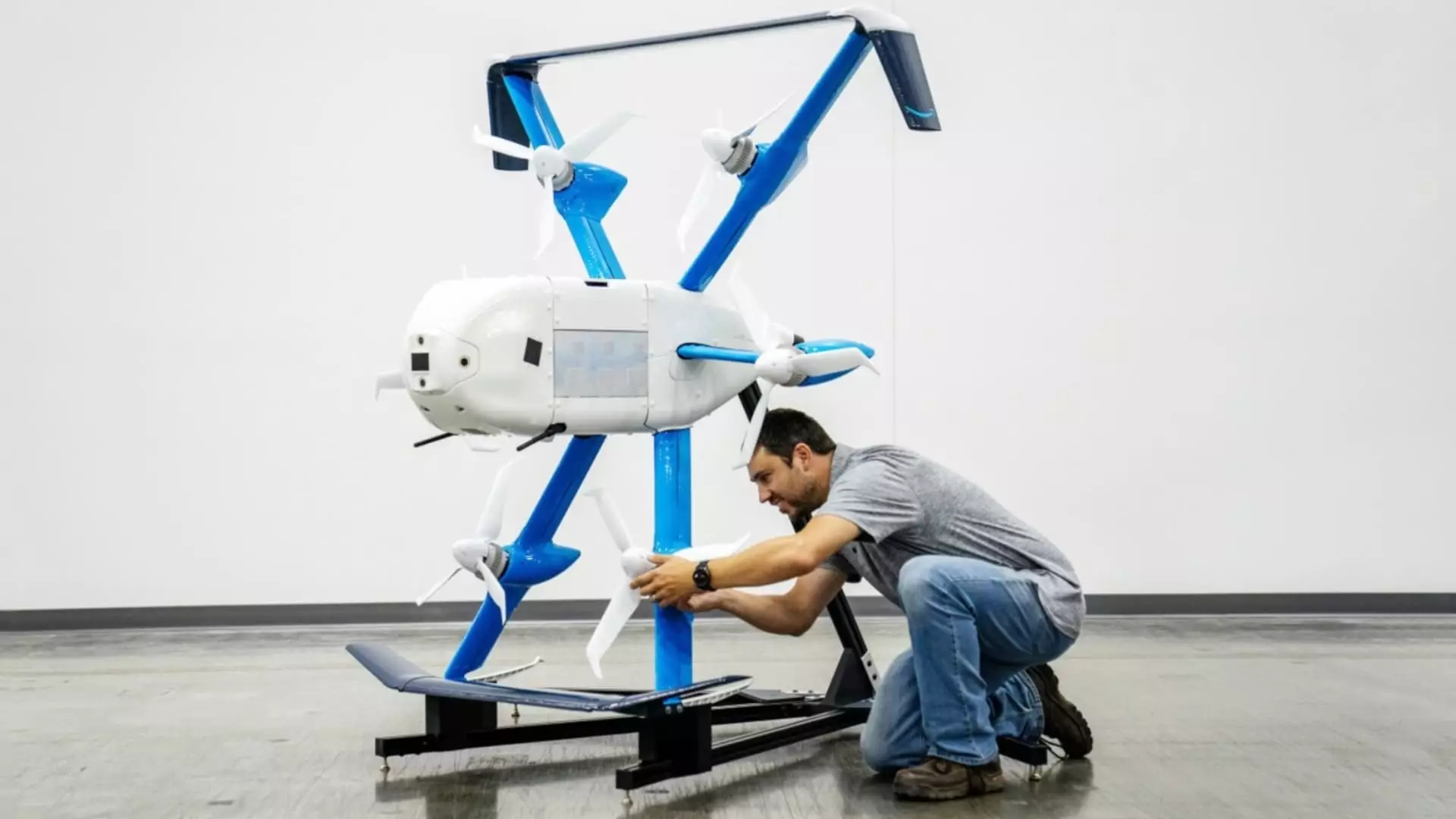In a striking comeback, Amazon has resumed its drone delivery service, Prime Air, after a significant hiatus that spanned several months. This interruption, which affected operations in College Station, Texas, and Tolleson, Arizona, highlights both the challenges and the performances of modern technology in logistics. Initially, the cessation in operations was traced back to a software flaw caused by altitude sensors malfunctioning due to airborne dust. Although Amazon maintained that no safety breaches occurred, this incident clearly illustrated the importance of rigorous checks and balances in drone technology.
The resumption of deliveries signals Amazon’s commitment to safety and customer satisfaction. An official announcement from the company emphasized that thorough diligence is critical when it comes to integrating new technology in everyday life. The emphasis on safety serves not just as a corporate mantra but underlines the very foundation upon which brand loyalty is built in today’s competitive marketplace.
The Demand Surge: Navigating New Heights
Following the resolution of the software issues and FAA approval, Amazon reported an extraordinary uptick in demand for its Prime Air services. David Carbon, a key figure overseeing the drone initiative, shared an exhilarating account where a drone successfully delivered a bottle of ZzzQuil to a customer in an impressive 31 minutes and 30 seconds. While precise details regarding the drone’s flight distance were intentionally withheld, these success stories are essential in creating a narrative that blends both efficiency and futuristic appeal.
With the promise of quicker deliveries enticing customers, Amazon’s vision of drones ferrying essential items—ranging from toothpaste to batteries—may be closer to realization than ever before. However, the limited operational zones in College Station and Tolleson raise questions about scalability. Prolonged delays in expansion initiatives could leave Amazon vulnerable to emerging competitors intrigued by the realms of drone technology.
Strategic Innovations: The MK30 Takes Flight
A crucial component of Amazon’s return to drone deliveries is the introduction of the MK30 drone, which promises not only enhanced technology but also reduced noise levels. This particular feature plays a pivotal role in calming public concern regarding the noise pollution that prior drones had caused in quieter suburban settings. The anticipated relocation of Amazon’s drone hub further reflects a proactive approach to community relations—a strategic move meant to ease any tensions that arise from disruptive technology.
Nonetheless, the journey has not been without turbulence. Historical incidents of drone malfunctions, including crashes during testing, reveal vulnerabilities that could undermine the public’s confidence in the program. Such setbacks serve as stark reminders that innovation is often accompanied by risk. A company of Amazon’s stature must navigate these challenges with transparency, ensuring that the community remains informed about potential hazards associated with advanced drone operations.
Future Ambitions: Scaling Globally
Ambitious goals are at the forefront of Amazon’s drone initiative. The company aspires to deliver a staggering 500 million packages per year by the end of the decade—a bold target that many could argue reflects a cultural shift in consumer expectations. As it eyes international expansion, notably in markets like the United Kingdom, the global stage beckons.
There’s an undeniable excitement that surrounds the innovations being developed in drone technology, but one cannot help but question whether Amazon has the operational resilience and consumer adaptiveness to meet these growing demands. Progress has historically been slow and fraught with obstacles; however, with regulatory milestones achieved and government endorsements such as Transportation Secretary Sean Duffy’s recent visit to a Prime Air facility, there seems to be a newfound momentum.
In a world that increasingly prioritizes convenience and speed, Amazon is not just competing with traditional delivery services; it’s transforming how goods are transported. Yet, amid this transformation lies an imperative for the company to remain vigilant, ensuring that as they scale up, they maintain the integrity and safety that is crucial for long-term sustainability in this groundbreaking venture.

